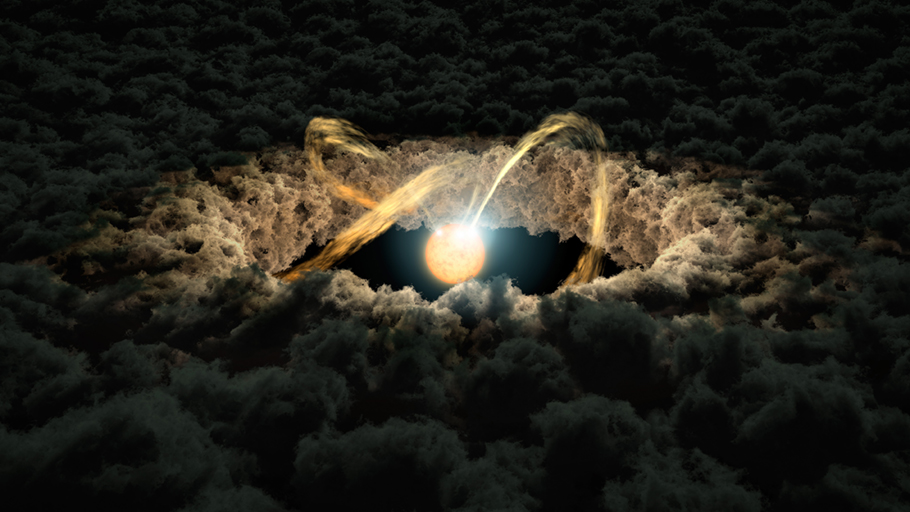A new paper speculates about how the gas giants — Jupiter, Saturn, Uranus and Neptune — ended up where they are, orbiting the sun like they do. They try to figure an explanation for what happened to gas giants in other solar systems and ours- and try to make an education guess if a fifth gas giant lurks 50 billion miles away. A new planet 9, or a planet 14, or whatever a tiny minority of astronomers in the IAU try to decree.
Stars are born from clouds of cosmic gas and dust. When our sun ignited, the early solar system contained a primordial disk of gas that set off the formation and evolution of the planets, including the gas giants. In the late 20th century, scientists began to believe that the gas giants initially circled the sun in neat, compact, evenly-spaced orbits. Jupiter, Saturn and the others, however, have long settled into orbits that are relatively oblong, askew and spread out.
But why?

Credit: NASA/JPL-Caltech
In 2005, an international team proposed an answer in the Nice model. It posits that there was an instability among these planets, a chaotic set of gravitational interactions that ultimately set them on their current paths.
It's a fine model but not settled science. For example, it was originally thought that the gas giant instability took place hundreds of millions of years after the dispersal of that primordial gas disk that birthed the solar system. Newer physical evidence suggests it happened more quickly.
That means a new model. They call it a theory but it is mostly hypothetical. The authors argue the gas giants may have been set on their current paths because of how the primordial gas disk evaporated. That could explain how the planets spread out much earlier in the solar system’s evolution than the Nice model originally posited and perhaps even without the instability to push them there.
Their rebound effect provides a more natural explanation for the Nice model and its instability. Their belief is the gas disk dissipated from the inside out. Inside-out dissipation provided a natural trigger for the Nice model instability. With the new trigger, the picture at the beginning of the instability looks the same. There’s still a nascent sun surrounded by a cloud of gas and dust. A handful of young gas giants revolve around the star in neat, compact orbits through that cloud.
Once the sun turned on and started burning its nuclear fuel, it generated sunlight, heating up the disk and eventually blowing it away from the inside out. This created a growing hole in the cloud of gas, centered on the sun. As the hole grew, its edge swept through each of the gas giants’ orbits. This transition leads to the requisite giant planet instability with very high probability, according to the team’s computer simulations. The process of shifting these large planets into their current orbits also moves fast compared with Nice model’s original timeline of hundreds of millions of years.
The new trigger also leads to the mixing of material from the outer solar system and the inner solar system. The Earth’s geochemistry suggests that such a mixing needed to happen while our planet is still in the middle of forming.






Comments